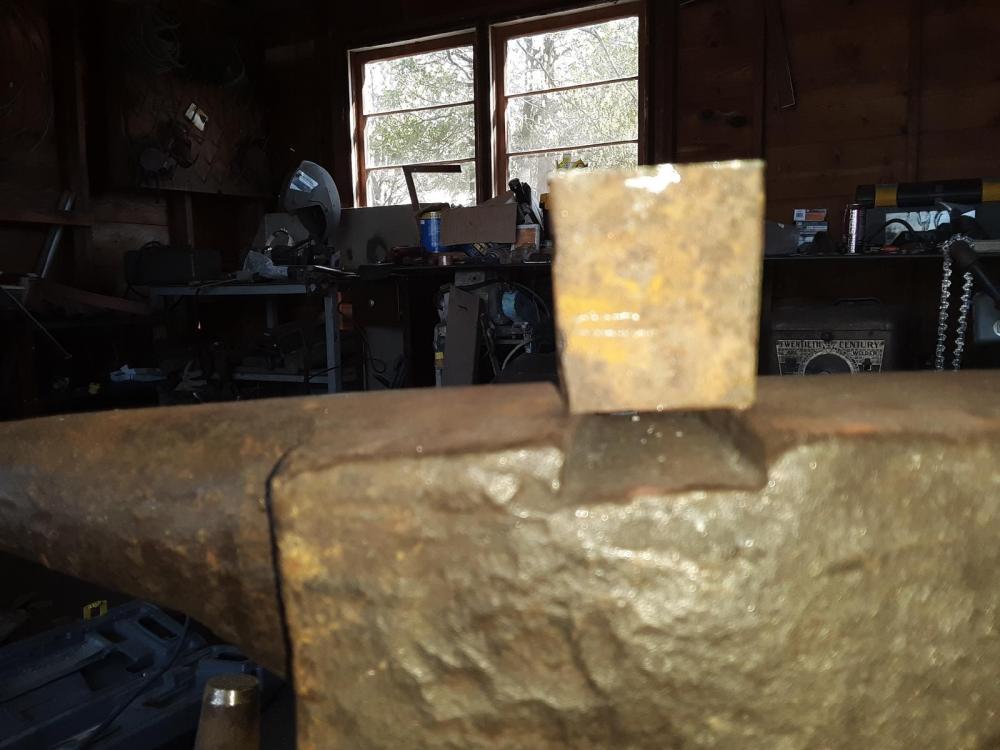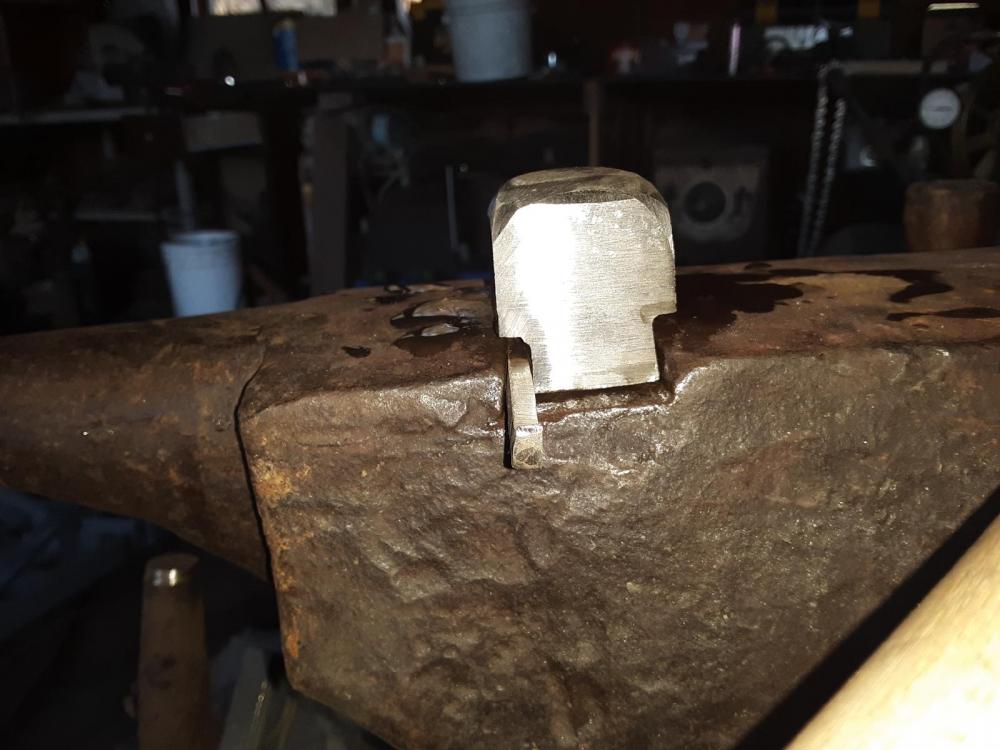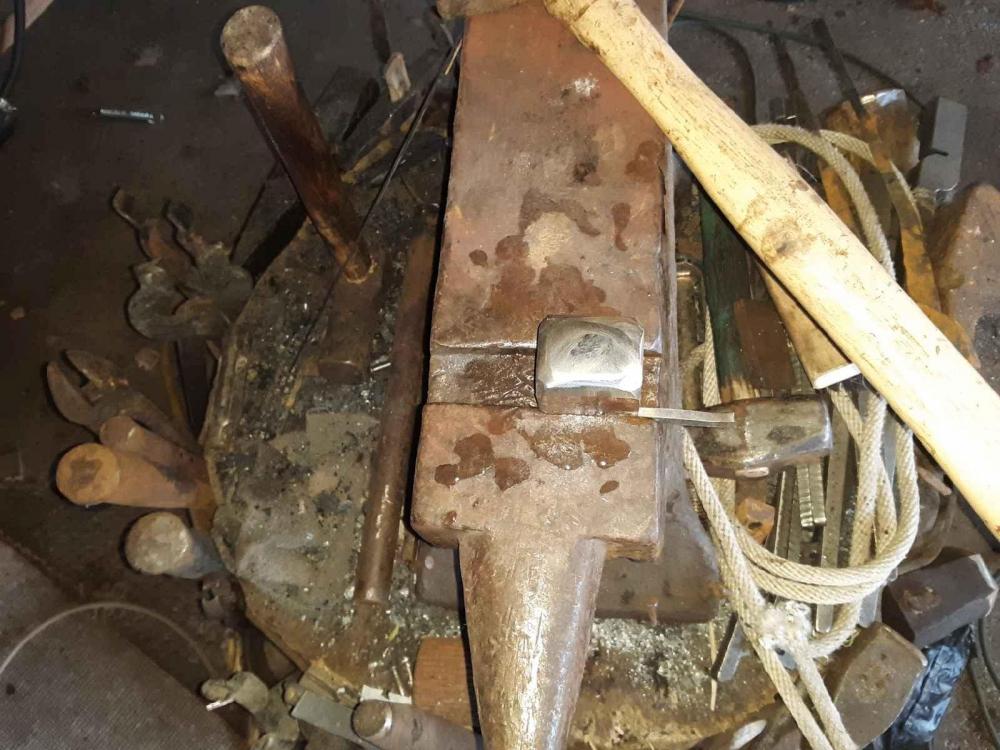-
Posts
331 -
Joined
-
Last visited
Content Type
Profiles
Forums
Articles
Gallery
Downloads
Events
Posts posted by Benona blacksmith
-
-
This particular one will be used for forging the bevels on draw knives. I'm also going to make a rivet header and a few stake anvils that will get wedged into the dovetail. I'm also going to make a hardie tool that will hold the reigns of tongs at an equal height for use with the rivet header.
-
-
Could be a military I'd badge. I've seen german anvils with them.
-
Looks like a John Brooks to me. Definitely not a cast iron fake!!!!!!!
-
In grinding the blade and there isnt one delamination. Even the one spot I had to coax this back together with the 1084 powder and borax. I didnt use flux in making the initial billet because it is canister Damascus but it worked to pull it back together.
Now it's time to experiment with cast iron.
-
Nice hammer!!!!!
3 hours ago, bobasaurus said:weld
-
I was working with a damascus billet today and had a delamination pop out. So I sprinkled a little borax on it and a pinch of 1084 fine mesh powder steel and it got it to weld back together. Well maybe I should say I might have gotten it to weld back together. I'm going to grind the blade tomorrow and we will see if it shows up. It might just be chance or maybe the powder steel helped? I'm going to drill a bunch of cast iron swarf and mix up a batch of ''special flux'' after I'm done with this blade.
-
Does anyone else notice the Fisher has handling holes?
-
Its flux: E
-
I have also found iron filings. I'm assuming it's made from filing cast iron. It is used to make sparklers.
-
Iron powder is "pure" iron right?
I have found a source for cast iron powder. It's used as an alloy in pyrotechnics. This may save me some time.
-
I found one recipe that calls for 10% boric acid 50% iron powder and 40% slag. I understand these recipes aren't a solve all solution.
-
That was because of copy and paste. I didnt mean to highlight it.
-
No actually its 40%
Cherry Heat Compound adheres to ferrous metals at relatively low heat, and is equally good for lap, split, butt, or jump welding. This flux compound enables the blacksmith to weld tool steel, plow open hearth and Bessemer steel at relatively low temperatures making stronger, smoother welds. The flux’s high percentage of metal (about 40%) facilitates the forge welding process considerably. This family of fluxes can be used with both iron and steel.
-
Cherry Heat and E-Z Weld both have cast iron filings in them.
-
I have welded without flux so I know it can be done with a reducing atmosphere but some welding operations need a little flux so I wanted to make something that can advantageous to my welding. Brake drums are a ductile iron aren't they?
-
Nice. Thank you. That makes perfect sense. It wouldn't rehydrate that way correct?
-
It's supposed to bring a little more carbon to the party and in turn lowers welding temps.
-
Alright I have been using plain old borax for welding and have had a few successful fluxes welds. I have read quite a few threads about fluxes and I'm going to make my own. I've read about iron powder, iron dioxide, boric acid, and just about everything else. Now what I've figured out through a lot of research is that carbon really does lower welding temps. So I plan on taking some old window weights I have that are cast iron and I'm going to get to work on filing them and collecting all the filings in a bucket then I'm going to take plain old borax and bake it at 350 for an hour to dehydrate it. And I'm going to mix 60% dehydrated borax 30% cast iron filings and 10% boric acid. Does this sound like a good mix?
Note: I will keep the mix in my welding rod oven to prevent it from rehydrating!
-
-
Honestly the only thing I have used rebar for is in concrete and a few times to weld handles on a billet but it is quite rough to hold onto for extended periods of time without gloves.
-
So I followed up with my friend that is a metallurgist and he has confirmed that rebar is really tightly controlled here in the United states and it would be impossible for an alloy and carbon content to change within inches let alone within an entire pour. So in all.... what the spec sheet says you can count on the entire batch to have those specifications and properties.
-
6 hours ago, Frosty said:
it's generally not carefully composed nor well mixed meaning the C and alloy can change unpredictably sometimes in inches
This is what sparked my interest. I have read this so many times I wanna know if it is really true. I talked with a metallurgist not too long ago and he told me that rebar has WAY closer tolerances than people give it credit for. It's not just melted and poured and hope for the best. Also a foundry keeps records for pretty much forever because when a bridge or building or other concrete structure fails the first thing that is looked at is the rebar and its properties. We have an opportunity to see rebar spec sheets and evaluate it...... I want to take advantage and see for myself.
-
Salem Straub, Gary Mulkey, Owen Bush, Ric Furrer

.thumb.jpg.04efa31b17e0217d84870be46a7a0461.jpg)




Making charcoal.
in Solid Fuels: Coal, Coke, Charcoal, Wood, etc
Posted
So how do you make charcoal?
Right now I'm using the barrel in the barrel method. I wanna make it In larger quantities. Any tips or pictures would be greatly appreciated.